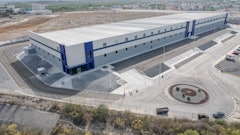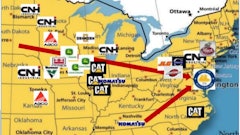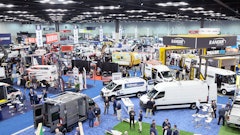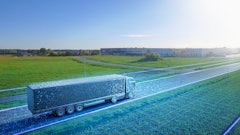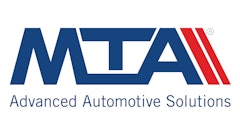
response by Candace Schnoor, Director, Public Affairs, Construction & Forestry Division, John Deere and John Deere Power Systems
[GLOBAL] What are the emerging economies you see with the most potential for expansion and growth for off-road equipment?
The BRIC countries continue to be a focus for John Deere and are the areas of the world where we see the most potential for expansion and growth for our construction class equipment.
Manufacturing began in our two Brazilian factories in Indaiatuba, Sao Paulo last year. Backhoes and excavators are currently rolling off the manufacturing line. In 2011, John Deere and Hitachi expanded their relationship with the creation of a second hydraulic excavator manufacturing joint venture in Indaiatuba. The hydraulic excavators produced by this newly established joint venture will be distributed on an exclusive basis by John Deere in Brazil, and other select export markets under the John Deere and Hitachi brands.
In China, the largest construction market in the world, we recently announced plans to enhance our presence by constructing a Deere wholly owned facility to manufacture wheel loaders and excavators near Tianjin. These products are sold in China and other export markets. In addition to building a low-cost manufacturing presence in China, we are investing in research and development capabilities that are appropriate for this fast-moving, developing market.
We participate in India’s growing economy through our joint venture with Ashok Leyland, located in Chennai, India. The joint venture recently introduced its second model of backhoe specifically designed for the India market and customer feedback has been very positive. These durable, reliable and fuel efficient backhoes provide the foundation for our future growth in India.
We’ve made significant investments in Russia and the Commonwealth of Independent States – including investments in sales and training. We’ve recently committed to doubling the manufacturing space at our Domodedovo production facility, allowing us to expand our product offering in Russia as we move into the future. In addition to the manufacturing investment, we’re establishing a leasing company in Russia through our John Deere Financial services division to augment current retail financing offered by local banks and leasing companies. This will help us provide retail financing solutions, enhancing service to our customers in this important market.
Please attribute the following response to Candace Schnoor, Director, Public Affairs, Construction & Forestry Division and John Deere Power Systems
[POLITICS] What government regulations, standards and/or bills were passed in the past year that most affected off-road equipment manufacturers?
2014 has brought the introduction of many off-road machines equipped with engines to meet U.S. EPA Final Tier 4/EU Stage IV emissions regulations. While these regulations are nothing new, for John Deere, Hitachi and many other off-road equipment manufacturers, 2014 was a key milestone for roll-out of Final Tier 4 machines in the 175 to 749 horsepower category.
Infrastructure development is a significant area of opportunity for off-road equipment manufactures and our customers. These development are significantly impacted by governmental programs and regulations. John Deere monitor legislation at the federal and state level, and works with its dealers to advocate for robust public infrastructure investments, the removal of statutory barriers to private investment, and encouraging projects to move forward to construction. Safe and reliable infrastructure is critical to provide clean drinking water, food, energy, and safe transport for people and goods. Whether these projects are driven by the public or private sector, modern infrastructure is also essential to the economic viability of a country and its competitiveness.
Surface transportation programs that fund and authorize road, bridge and mass transit projects have continually been underfunded and delayed in the U.S. The U.S. federal program, known as MAP-21, was set to expire in September 2014 but was temporarily extended through May 2015 at current funding levels. John Deere support a long-term bill with robust funding and improved processes by which infrastructure projects are planned and built. The focus in the U.S. now has shifted to how future federal programs will be funded, given the fiscal situation and diminished funding levels in the Highway Trust Fund. Additionally, legislation has been introduced in the U.S. House and Senate to lift the state volume cap on private activity bonds for water and wastewater infrastructure projects. This has the potential to generate billions in private capital for the water infrastructure market at a very low cost to government.
Elsewhere, broader reforms of the Mexican economy and opening up the oil and gas industry to the private sector will provide opportunities for construction equipment sales in the coming years. President Pena Neto announced a National Infrastructure Plan for 2014-2018 that includes 743 projects in various sectors and would represent $590 Billion in public and private funding over 5 years; roughly 60% is expected to come from state and federal government budgets. Over half of this funding is expected to go towards the energy sector. The Canadian federal government launched a “New Building Canada Plan” which will provide $53 Billion over 10 years for provincial, territorial, and municipal infrastructure investments. These investments will provide ongoing opportunities for the construction industry and off-road equipment manufacturers. In other growth markets outside the U.S. and Canada, such as Brazil, Russia, India and China the race to build and fund infrastructure, and the rapid development of urban centers, creates a lot of opportunity for the construction industry and off-road equipment manufacturers.
Please attribute the response below to Jena Holtberg-Benge, Director, John Deere WorkSight™, John Deere Construction & Forestry
[TECHNOLOGY] What current technologies have the most potential for future gains?
Construction technology solutions like John Deere WorkSight™ will continue to gain popularity as more and more customers adopt technology on the jobsite and recognize the productivity-boosting benefits. In fact, in recent market research conducted by John Deere we found that 30% of customers leverage telematics data to manage their fleets and business, the larger the fleet, the more likely they are to use the technology. John Deere WorkSight is made up of our advanced machines, several construction equipment technologies, and our John Deere dealers. It can help customers optimize machines, uptime, and jobsites – or said another way, it can help our customers maximize productivity, uptime, and low daily operating costs. John Deere WorkSight utilizes solutions such as JDLink™ machine monitoring system, machine health prognostics, remote diagnostics, payload weighing, and grade control to deliver these results.
Jobsite uptime is imperative as well. Customers tell us the one thing they really want is to have their equipment running when they need it to. Ultimate Uptime, featuring John Deere WorkSight is designed to fulfill that wish. Ultimate Uptime calls attention to our comprehensive suite of support solutions and highlights the tremendous value that John Deere WorkSight’s exclusive machine health prognostics and remote diagnostics and programming deliver. Just like our approach to machine design, we listen to customer needs and then respond by building – together – the uptime solutions that meet their unique needs.




